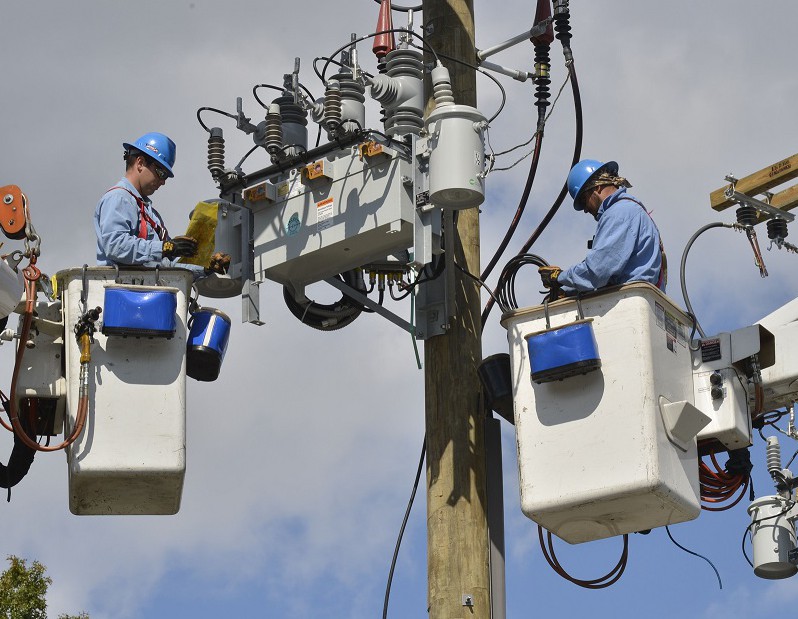From Tax Cuts to Rate Cuts
A growing number of large investor-owned electric utilities plan to pass along their windfall from corporate tax cuts in the form of lower rates. Where will customers benefit?
By Jeffrey Steele
Corporate tax cuts furnished by the Tax Cuts and Jobs Act of 2017 are translating into extended breaks for commercial property ratepayers. Utilities in major markets from coast to coast are cutting rates substantially. Commercial property owners, managers and occupants stand to benefit from rates that are significantly lower in some cases.
“Utility companies will pass the windfall created by lowered corporate taxes on to customers in the form of lower rates for electricity and natural gas,” said Valhalla, N.Y.-based Daniel Rice, CEP and manager of client services for Yardi Energy.
“This may free up money in utility budgets to enable energy efficiency or other projects. For tenants that are submetered, this could lower their energy bills as well.”
Utilities that have announced rate cuts—or are rumored to be considering them—include:
- Baltimore Gas & Electric, which is passing through $82 million to customers by lowering rates
- Washington, D.C.-based Pepco, which plans to start reducing customer bills starting in the first quarter
- Chicago-based ComEd, which Rice noted is passing through $200 million via decreased rates
- Arizona Public Service Company reportedly intends to parlay the tax cuts into rate reductions for 1 million customers.
- Portland, Ore.-based Pacific Power
In addition, officials in one of the nation’s largest power markets are taking steps to steps to make sure the hundreds of million dollars reaped by the state’s utilities via the corporate tax cuts will be returned to the state’s 10 million utility customers, who indirectly pay the taxes. “Con Edison and all New York State utilities have been ordered by the New York Public Service Commission to assess the impact to ensure benefits to customers,” Rice reported. “There should be a plan in place by May.”
Moreover, Rice views the trend to be more than one-off cuts that will be followed by hikes later this year. “[It’s] more of a long-term situation,” he said. “Regardless of the interventions that take place in the short-term, the next rate cases will adjust for the new, lower taxes when setting how much money the utility needs to recover from customers to pay for federal taxes.”
Provisions at some utilities—but not all—automatically return the net benefits for consumers, noted PSC chair John B. Rhodes noted that. “To prevent a windfall, we will conduct a thorough accounting of the benefits the utilities realize from the tax reduction plan, and we will ensure it’s the customers who receive the benefits, not company shareholders,” he said.
The PSC’s regulatory jurisdiction covers New York’s investor-owned utilities. which regulates six electric-gas utilities, five gas utilities, three major water companies, three dozen-plus small telephone companies and hundreds of small water companies.
For regulated utilities, the tax cuts mean lowered income tax expenses and, as a result, lower taxes to be recovered in revenue requirements, explained Mario Costanz, CEO of Happy Tax, a Miami-based mobile tax preparation firm.
“However, this isn’t necessarily good for utility customers,” he added. “With less accumulated deferred income tax (ADIT) amounts available, some utilities will be looking for alternative sources of funding for capital expenditures.” That may call for turning to traditional forms of debt or equity fundraising, which may translate to a higher weighted average cost of capital and a higher return requirement.
Most utility regulators are studying whether—and how—utility tax breaks can yield refunds or reduced rates, reported Costanz, noting that rate cases are complicated. “Utilities may argue they need the tax windfall to make capital improvements,” he said.
In at least four states—South Dakota, Delaware, Wyoming and Montana—regulators have asked utilities to submit proposals for using funds made available by the tax cuts.
Costanz predicts that ratepayers will benefit either way. “If the utilities use the money they’re saving on taxes to repair failing infrastructure, customers will see savings down the line,” he said. “If the money goes back to customers directly as a rate reduction or refund, customers will see immediate benefits.”








You must be logged in to post a comment.